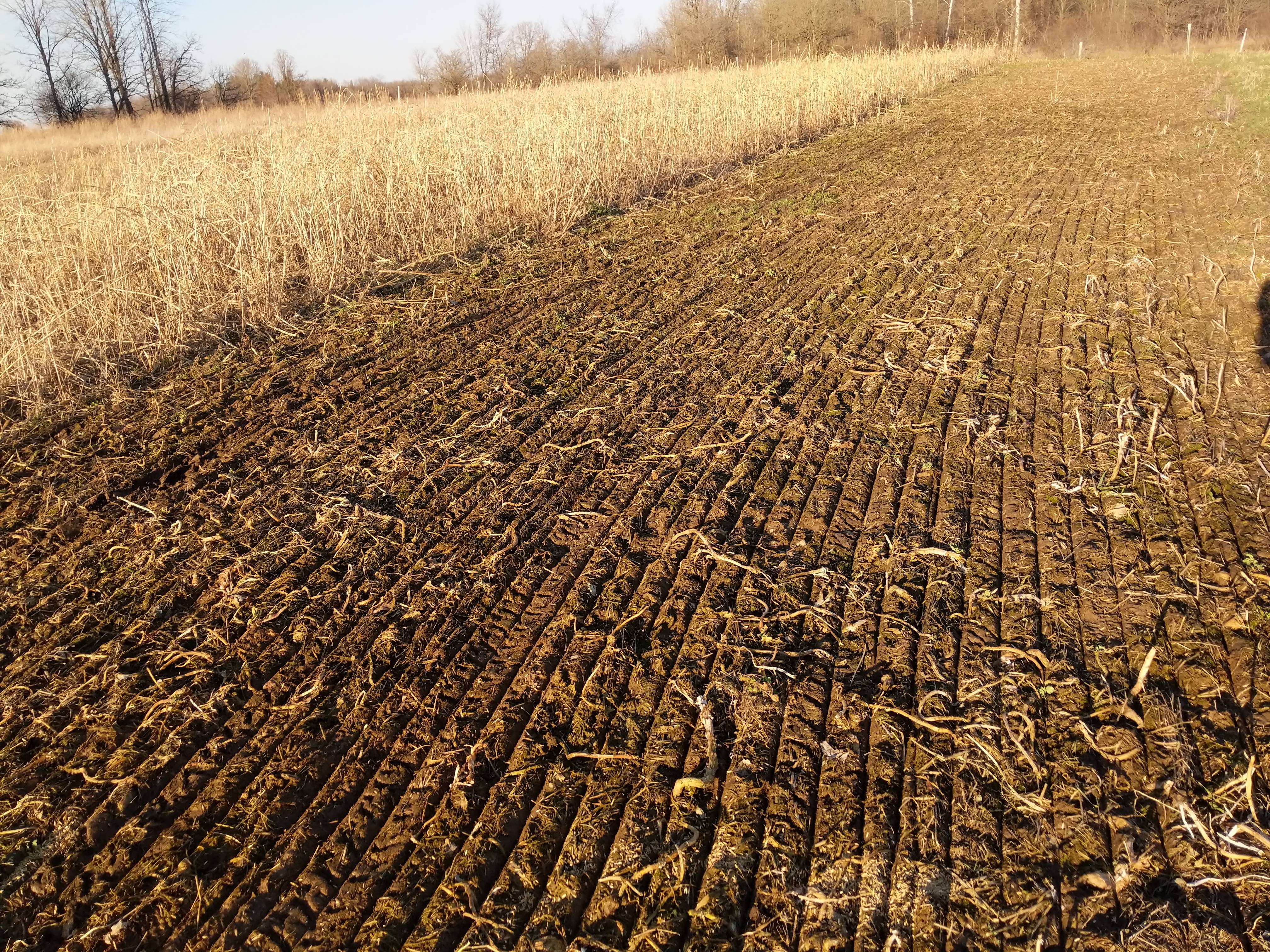Pumpkin seed is cheap enough, I broadcasted some just to try it. You can also plant 'em fast enough, you can go and put the seeds in my hand as well. I put in maybe 300 seeds by hand, and when I got tired of doing that, I just flung the rest. Don't overlook squash either. I've fed a pickup load of squash/pumpkins a few years now, and all squash gets eaten as quickly as pumpkin, and also matures a lot faster than pumpkin.
If you had the ability to get the seed under some duff, you'd get something I imagine. Where I fed my squash pile, I also had winter rye planted. The following spring, I sprayed and mowed the rye, and volunteer squash survived all that and put on new squash yet that year. For the tonnage that is possible with squash and pumpkins, and the cost to try, it's a no brainer. Commercial operators can grow upwards of 16-tons/acre. If we could nab 10% of that yield in a mix, you'd have 3000 lbs/ac just in something the deer likely won't even try until Oct/Nov (at least in the north).
View attachment 24928












